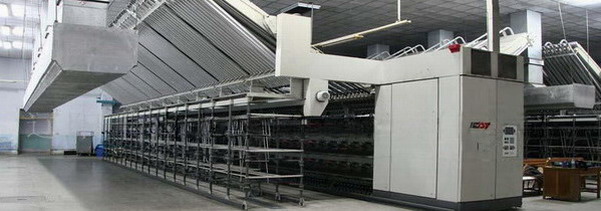Habasit(哈伯斯特)輕型輸送帶
The invention of the conveyor belt can't neither be assigned to an exact date nor to a specific inventor. 輸送帶的發(fā)明不能既不被分配到一個(gè)確切的日期�,也沒(méi)有一個(gè)具體的發(fā)明者。 In fact, there are various technical innovations that could be seen as trailblazers for the modern, synthetic conveyor belt. 事實(shí)上��,有各種技術(shù)創(chuàng)新����,現(xiàn)代,合成輸送帶的開(kāi)拓者���。
Primitive conveyors with belts were first used isochronic with the onset of the industrialization in the second half of the 18 th century in England. 下半年在英國(guó)在18世紀(jì)來(lái)臨的工業(yè)化等時(shí)首次使用原始的輸送皮帶 ��。 Many industries and companies – such as for example abattoirs and bakeries – were then equipped with that new time- and money-saving transport system. 然后��,許多行業(yè)和公司-如例如屠宰場(chǎng)和面包房-配備新的時(shí)間和金錢節(jié)約運(yùn)輸系統(tǒng)�����。 The most likely first steam operated conveyor belt was set into operation in 1804 by the British Navy to produce ship's biscuits. 最有可能的第一臺(tái)蒸汽操作輸送帶是在1804年投入服務(wù)����,由英國(guó)海軍生產(chǎn)船舶的餅干。
In 1892, Thomas Robins developed a conveyor belt for carrying coal, ore and other raw materials. 1892年�,托馬斯羅賓斯開(kāi)發(fā)出一種用于運(yùn)載煤炭,礦石和其他原材料的輸送帶 ���。 Some years later, in 1901, the Swedish firm Sandvik started with the production of conveyor belts made out of steel. 幾年后�����,于1901年��,瑞典公司山特維克開(kāi)始與由鋼制成��,輸送帶生產(chǎn)。 In 1905, the British mining engineer Richard Suttcliffe, designed the worlds first conveyor belt for underground mining (to be used in coal mines). 1905年����,英國(guó)的采礦工程師理查德Suttcliffe,設(shè)計(jì)為地下采礦(煤礦)世界上第一個(gè)傳送帶 �����。 His invention revolutionized the whole mining industry. 他的發(fā)明徹底改變了整個(gè)采礦業(yè)����。
From 1907 on, conveyor belts were also used in Germany, more precisely in a coffee company in Bremen. 從1907年起��,傳送帶也可用于在德國(guó)��,更精確地在咖啡公司在不來(lái)梅��。 In 1913 famous Henry Ford became the first car manufacturer using assembly lines with conveyor belts. 著名的亨利福特在1913年成為第一個(gè)汽車制造商使用傳送帶組裝生產(chǎn)線 �����。
In 1957, the BF Goodrich Company filed a patent for the so-called Turnover Conveyor Belt System. 1957年���,BF古德里奇公司提出了所謂的營(yíng)業(yè)額輸送帶系統(tǒng)的專利 。 This system had an integrated half-twist, that extended a belts lifetime significantly, because it allowed the belt to wear and tear off on both sides. 該系統(tǒng)集成的半扭�����,顯著延長(zhǎng)了皮帶壽命����,因?yàn)樗试S帶磨損雙方。
A French society created in 1972 a straight conveyor belt with a length of 13.8 km, at the time it was the longest conveyor belt in the world. 一位法國(guó)社會(huì)于1972年創(chuàng)建一個(gè)長(zhǎng)度為13.8公里的直線輸送帶����,它在當(dāng)時(shí)是世界上最長(zhǎng)的的輸送帶�。 Today, the longest conveyor belt has a length of 100 km and transports phosphate from the mines in the Western Sahara to the coast. 今天���,最長(zhǎng)的輸送帶長(zhǎng)度為100公里和運(yùn)輸磷酸鹽在西撒哈拉海岸的地雷 �。 Nowadays such heavy belts for outdoor transporting of bulk materials like stone, coal or boulder, are rugged rubber belts with a steel cord trb member. 如今��,這樣沉重的皮帶��,戶外運(yùn)送散狀物料����,如石料,煤或巨石堅(jiān)固耐用的橡膠帶與鋼線牽引成員�����。
The light, fully synthetic fabric conveyor belt goes back to the 1960s, when the industrial production of consumer goods started. 光���,全合成織物芯輸送帶可追溯到20世紀(jì)60年代,工業(yè)生產(chǎn)的消費(fèi)品時(shí)開(kāi)始���。 These belts are mainly used for indoor transportation of unit loads – such as food, boxes, cans, luggage and so on. 這些安全帶主要用于單位負(fù)載的室內(nèi)運(yùn)輸-如食品�,盒�,罐����,行李等 �����。 Constant effort on research and innovation – steady amelioration of materials and production techniques – turned light conveyor belts gradually to versatile and indispensable machine elements for uncountable applications in almost every industry range. 研究和創(chuàng)新上的不懈努力-穩(wěn)定的材料和生產(chǎn)技術(shù)的改良-轉(zhuǎn)向輕型輸送帶逐步在幾乎每一個(gè)行業(yè)范圍不可數(shù)應(yīng)用的多功能的不可缺少的機(jī)器元素�����。
Parcel transport in the postal industry and in distribution centres 包裹運(yùn)輸郵政業(yè)和配送中心
Food conveyor belts in the bakery and confectionery industry 在面包店和糖果業(yè)的食品輸送帶
Conveyor belts on a bl stamping press and in a corrugated cardboard manufacturing 輸送帶上的金屬?zèng)_壓和在瓦楞紙板生產(chǎn)
Printing blanket on a rotary printing machine and processing belts in a prepress for the particle board manufacturing 刨花板制造毯上打印一個(gè)輪轉(zhuǎn)印刷機(jī)和加工印前帶
Today's state-of-the-art fabric conveyor and processing belts fulfil the most demanding and various customer requirements! 今天的狀態(tài)的最先進(jìn)的面料輸送和處理帶滿足最苛刻的和不同客戶的要求���!

